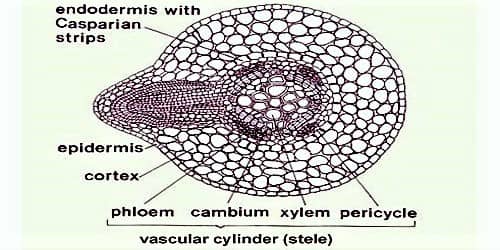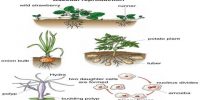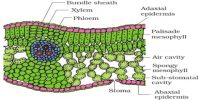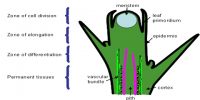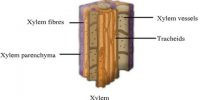Pericycle: Pericycle is a plant tissue that enables plants to grow roots and facilitates plant development. It helps plants grow and develop throughout all stages of life. It is composed of one Layer sclerenchymatous cells. The pericycle is a plant tissue that enables plants to grow roots and facilitates plant growth. It is the external boundary of the stele of plants; may not be present as a separate layer of cells. It is a distinctive layer of cells in plants, named after its situation, surrounding the vascular tissue in stems and roots.
The main function of the pericycle cell in root is to give rise to lateral roots. It helps plants grow and develop throughout all stages of life.

Function:
- It stores all other food materials except nitrogenous foods.
- The pericycle is classified as a primary tissue, which means that it plays an essential role in keeping plants alive.
- Pericycle generates cells of various kinds, including those that create lateral root development and enable secondary root growth.
- Pericycle generates cells of various kinds, including those that create lateral root development and enable secondary root growth.
- The warm, nutrient-rich innermost layer of pericycle serves as a perfect breeding ground for new cells, while its tough outer layer protects roots from damage.
- It regulates the lateral roots by quickly dividing near the xylem elements of the roots. It is a layer of cells and gives increase to branch roots.
- In case of the stem, it helps increase in length of the shoot by cell division in the shoot apical meristem.
- Secondary growth is characterized by an increase in thickness or girth of the plant. It is caused by cell division in the lateral meristem.
- In angiosperm roots, it is essential for lateral root initiation and later on becomes involved in secondary growth.
- It stores all other food materials except nitrogenous foods. They are responsible for the storage of nutrients and short distance transport of nutrients.
Pericycle cells consist of two types of cells parenchyma or sclerenchyma cells.
- Parenchyma cells are actually vascular. They are responsible for the storage of nutrients and short distance transport of nutrients.
- Sclerenchyma cells are non-vascular cells, they are responsible for providing support and protection.
Pericycle formation
Pericycle may be composed of parenchyma cells or sclerenchyma cells or both. It surrounds in a plant root, the cylinder of plant tissue between the endodermis and phloem.
Pericycle generates cells of various kinds, including those that create lateral root development and enable secondary root growth. Lateral branches and phellogen may arise from the pericycle.
